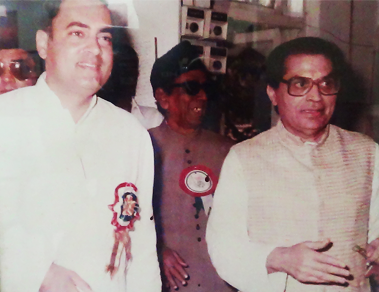Historical Background of the institution
Khilafat House is located in leafy by lanes of Moti Shah lane or Love Lane as it is fondly called. This building was renovated in 1981, Speaking on the renovation ceremony of the historical Khilafat House on 19th April 1981 the late Mrs. Indira Gandhi had remarked, ‘What an excellent idea to renovate and reactivate the old ‘Khilafat House’. It is hallowed with the remembrance of stalwarts of our freedom struggle and has been an active centre of Hindu-Muslim unity.
Gandhi’s embrace of the Khilafat movement, founded by the fiery Ali brothers Maulana Mohammed Ali and Shaukat Ali, and Maulana Abul Kalam Azad (all well-known nationalists), made it one of the main planks of the Non-Cooperation Movement. It became a movement that showcased Hindu-Muslim unity.
Freedom related activities often found a home in AIKC’s office in Khilafat House in Byculla, Mumbai. The House has the honor of being the starting point of the countrywide non-cooperation movement by Gandhiji in 1920.All India Khilafat Committee, after independence in 1947 was declared a public
Khilafat House ran a nationalist Urdu daily called Khilafat. Post-partition, the daily came under the supervision of Maulana Zahid Shaukat Ali, son of Shaukat Ali. Zahid. The present chairman is Padmashri Mrs. Fatma Zakaria the widow of late Dr. Rafiq Zakaria who had held the post for the last three decades.
The yearly procession in the form of a line of trucks originates from the Khilafat House and returns back after a round of the city roads and is taken out on Eid-e-Milad-un-Nabi.The juloos from Khilafat House traces its history back to Maulana Mohammed Ali Jauhar. ‘The first Id-e-Milad procession from Khilafat House originally Chhotani House to Haj House was led by Gandhi as head of the AIKC









